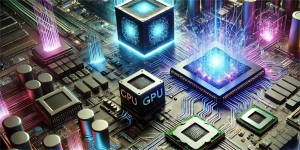1. System Architecture Design
The multiverse ecosystem public chain adopts a hierarchical system architecture, including the following main layers:
- Application Layer: Provides interfaces for users and developers, including wallets, browsers, development tools, etc., for accessing the blockchain network.
- Smart Contract Layer: Supports the execution and deployment of smart contracts, adopting WebAssembly (WASM) and Ethereum Virtual Machine (EVM) technologies compatible with multiple programming languages.
- Consensus Layer: Ensures the correctness and security of transaction data through an improved Proof-of-Stake (PoS) mechanism combined with the Byzantine Fault Tolerance (BFT) protocol.
- Network Layer: Supports P2P protocols and distributed network communication, ensuring efficient connection between blockchain nodes and enabling cross-chain interoperability.
- Storage Layer: Adopts distributed storage solutions and efficient data compression algorithms to ensure the scalability and efficiency of data storage.
2. Bidirectional Collaboration Between CPU and GPU
The multiverse ecosystem public chain achieves bidirectional collaborative computing between CPU and GPU through Quantum Matrix Technology, enhancing transaction processing capabilities. The specific implementation includes:

- CPU Task Scheduling: By dividing transaction processing tasks into multiple threads, the CPU is responsible for transaction verification and consensus management, while the GPU handles data parallel computing and complex graphic calculations. This structure allows the IST platform to maintain high efficiency under high data loads, with the CPU primarily responsible for basic tasks such as network layer protocol processing and consensus protocol execution.
- GPU Parallel Computing: The GPU mainly handles high-frequency transaction processing and verification. Through parallel computing, it quickly processes large volumes of transaction requests, distributes transactions to the CPUs and GPUs of multiple nodes for parallel processing, and achieves efficient TPS (transactions per second) through data flow optimization and parallel algorithms, enabling real-time processing of millions of transactions.
- Load Balancing: IST dynamically distributes workloads through a load balancer to ensure consistent processing efficiency across different nodes, effectively avoiding resource waste and node congestion. Smart load balancing algorithms adjust computing resources dynamically to ensure the network operates stably under high loads.
- Dynamic Scaling Mechanism: Based on cloud-native technologies, IST supports dynamic node expansion, automatically adding processing nodes when transaction volume surges to ensure platform stability and high TPS performance.
3. Shard Technology
IST’s shard technology distributes on-chain transactions and data across different shards for independent processing, effectively improving system scalability and processing capabilities.
- Vertical and Horizontal Sharding: IST employs both vertical sharding (sharding by application scenario) and horizontal sharding (sharding by data range), allowing different types of transactions to be executed in parallel on independent shards to further optimize resource utilization.
- Intra-shard Consensus and Cross-shard Communication: Intra-shard consensus mechanisms ensure independent processing of transactions in each shard, while cross-shard communication protocols (such as inter-shard Merkle tree proofs and relay chain verification) ensure data synchronization and consistency across shards.
The multiverse ecosystem public chain adopts a multi-layer sharding design, including:
- Network Sharding: Divides the network into multiple sub-networks to reduce communication pressure between nodes.
- Computational Sharding: Each shard independently processes transactions and smart contract execution to enhance computing power.
- Storage Sharding: Stores data in shards to reduce storage pressure on individual nodes and improve storage efficiency.
4. AI Intelligent Computing Power
The AI layer is responsible for actual artificial intelligence tasks, including data analysis, model training, decision optimization, etc. AI can rely on the decentralized platform provided by the blockchain for data exchange and processing.
- Data Processing and Model Training: AI model training can be performed on decentralized data sources. The blockchain records data sources and quality to ensure data authenticity and reliability.
- Machine Learning and Inference: The AI layer includes machine learning (ML) and deep learning (DL) models for extracting knowledge from data, predicting results, and automatically optimizing decisions.
- Decentralized Computing: AI computing tasks can be optimized through distributed computing resources provided by the blockchain. AI tasks can be split into subtasks and allocated to different nodes for parallel execution to improve computing efficiency.
- Decentralization and Autonomous Decision-making: The blockchain is inherently decentralized, meaning no single central authority controls the network. Integrating AI into the blockchain enables decentralized intelligent decision-making.
- Role of AI in Quantum Technology: Quantum computing technology uses quantum bits (qubits) for parallel computing, enabling significant speedups over traditional computers for specific tasks. The potential of quantum computing includes revolutionary breakthroughs in encryption, optimization, search, and simulation. However, quantum computing technology remains in the experimental stage, facing significant technical challenges, especially in making quantum computing more reliable and scalable.
- Role of AI in Matrix Parallel Technology: Matrix parallel technology is a method of decomposing complex computational tasks (such as matrix multiplication and linear algebra calculations) into multiple subtasks for parallel processing. In blockchain applications, matrix parallel technology can accelerate large-scale computing and data processing tasks, particularly in scenarios requiring high throughput and low latency.

5. Quantum Computing
Quantum computing uses quantum bits (qubits) instead of traditional bits for computation. Qubits can exist in multiple states simultaneously, enabling quantum computers to perform certain computational tasks much faster than traditional computers, especially for large-scale data processing and complex algorithm execution.
- Enhanced Security: Quantum computing provides more robust encryption and key distribution technologies. Using quantum key distribution (QKD) and quantum-resistant encryption algorithms, it enhances blockchain security and defends against potential cracking threats from future quantum computing.
- Efficient Computing Power: Quantum computing can significantly improve efficiency in some computational tasks, such as optimizing consensus algorithms, accelerating transaction verification, and executing smart contracts, thereby enhancing the processing capability and scalability of blockchains.
- Decentralized Quantum-Secure Communication: Quantum blockchains enable quantum-secure peer-to-peer communication, providing extremely high privacy protection and anti-eavesdropping capabilities, making blockchain networks more secure during data transmission.
- Quantum-Enhanced Consensus Mechanisms: Quantum computing may provide more efficient consensus algorithms for blockchains (such as quantum algorithm-optimized PoW or PoS mechanisms), improving network processing speed and energy efficiency.
- Resistance to Quantum Hacking Attacks: Quantum-resistant algorithms ensure that blockchains can still defend against the risk of classic encryption methods being cracked in the quantum computing era, safeguarding long-term system security.

6. Matrix Parallel Technology
Matrix parallel technology requires substantial computing resources, especially multi-core CPUs, GPUs, or distributed computing clusters. Therefore, blockchain networks need to support efficient hardware architectures to fully leverage the advantages of matrix parallelism.
- Improved Throughput and Concurrency: By decomposing computational tasks into multiple parallel subtasks, matrix parallel technology significantly improves the throughput of blockchain systems, especially in high-concurrency and large-scale transaction environments, enabling processing of more transactions and verification requests.
- Reduced Latency: Parallel processing reduces the burden on a single computing node, thereby lowering overall system latency and enhancing the real-time performance of blockchain networks. This is particularly important in application scenarios requiring fast responses, such as payment systems and financial transactions.
- Optimized Computational Efficiency: Matrix parallelism can utilize multi-core CPUs, GPUs, or distributed computing resources to optimize the use of computing resources and enhance overall computational efficiency. In large-scale blockchain networks, optimizing the computing process is crucial for improving overall system efficiency.
- Enhanced Scalability: Matrix parallel technology effectively shares computational tasks, enabling blockchain systems to handle increasing numbers of nodes and transaction requests, thereby enhancing the scalability of blockchain networks. By allocating tasks to multiple processing units, the system can maintain efficient operation when adding nodes and processing capabilities.
- Reduced Energy Consumption: In traditional blockchain systems, especially under the Proof-of-Work (PoW) mechanism, energy consumption is a significant issue. Matrix parallel technology reduces energy consumption to a certain extent by improving computational efficiency and reducing redundant calculations, particularly in scenarios requiring extensive computing, such as mining and consensus verification.





